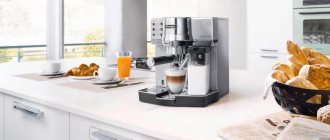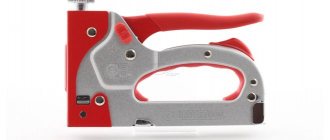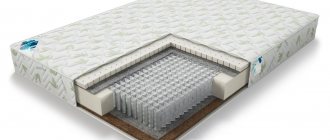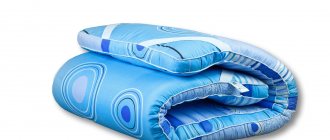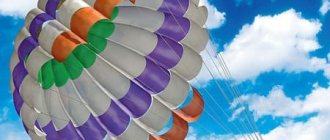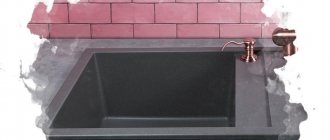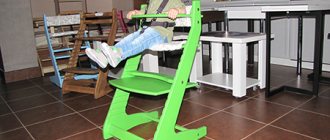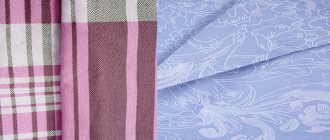Often, a mattress cover becomes an undeservedly forgotten item when preparing a bed, and many consider the purchase of this item for a sofa to be completely unnecessary. In fact, this is not at all true - the sofa, like the mattress, needs additional protection, and if we are talking about a sofa bed, then a mattress cover will contribute to your comfort and healthy sleep. In any case, a considerable load falls on the sofa - many families spend almost all their free time here, and children turn it into a training ground for active games.
Sofa mattress covers can be of two main types, depending on their functional purpose:
- protective mattress cover, made of thick fabric and protects the sofa upholstery from dirt, dust and moisture;
- An orthopedic mattress cover (also known as a sofa cover) is a thin springless mattress with orthopedic properties.
Not so long ago, covers were made only to order in special studios or even independently, and toppers could not even be dreamed of, while today the market offers an excellent selection of products for every taste and budget, for any standard dimensions of manufactured sofas. Sofa mattress covers can be attached to the base with elastic bands or Velcro, using zippers, buttons or fasteners. Some models also have special bumpers to protect the sides and top of the sofa.
Types of mattress covers
Classification by purpose
Manufacturers produce the following types of mattress covers (depending on purpose):
- protective mattress covers;
- corrective (including orthopedic mattress covers);
- special.
Protective models include single-layer models. Their task is only to protect the mattress or sofa from dust, moisture and mechanical damage. Protective mattress covers are made simple or waterproof.
waterproof mattress covers are produced either with special impregnation or two-layer - with a membrane coating or an oilcloth backing.
Some types of membrane coatings consist entirely of polyurethane; in appearance it resembles rubberized fabric.
An alternative to membrane fabric is one of the latest developments by manufacturers, a material based on Australian eucalyptus.
Some multi-layer toppers and necessarily children's models, which are additionally designed to prevent the appearance of diaper rash on the child's body, have the property of being waterproof.
A special children's mattress cover combines moisture resistance and orthopedic properties, which will help ensure the correct position of the spine from an early age, which means healthy posture in the future. Before making a purchase, it is recommended that you familiarize yourself with the quality certificates provided by the seller.
A corrective mattress cover will make the bed softer or harder, give “new life” to an old sofa with protruding springs, and help extend the life of furniture for sleeping and relaxing.
Manufacturers also produce models for sofas with folding mechanisms.
They will also help to adjust the old mattress if there is no desire or financial opportunity to replace it with a new one.
An orthopedic mattress cover can change the characteristics of the mattress and make it harder. A separate subtype of orthopedic products - anatomical with a “memory effect” - is able to “remember” the shape of the human body, which creates conditions for comfortable sleep.
Special models perform additional functions, for example, they are designed for the bed of bedridden patients or are made of a specific material, such as wool.
Classification according to conditions of use
According to the time of year in which mattress covers are used, they are classified into:
- summer;
- winter;
- all-season.
Summer models protect against overheating, have a high degree of breathability, absorb moisture, create and maintain a feeling of coolness. Winter ones - retain heat and help maintain moisture exchange. These properties depend on the filler and coating of the mattress cover.
All-season products are made double-sided (on one side there is a material suitable for use in winter, and on the other - for summer use) or made of one universal material.
Both summer and winter, comfort in bed will be created by bamboo, natural down or comforter (synthetic non-woven material, a type of holofiber).
Classification according to mattress cover materials
General and additional requirements for materials used in manufacturing:
- resistance to mechanical stress, including frequent washing;
- resistance to pollution;
- breathability;
- water-repellent properties;
- hypoallergenic;
- protection against bacteria;
- protection against static electricity.
Covering materials: cotton, polycotton, merino wool, satin, knitted fabric, terry fabric, teak, microfiber, velor, percale, calico, polyester.
Materials for filling: synthetic winterizer, artificial and natural latex, holofiber, bamboo, swan's down, cotton, sheep's wool, camel, halfitex, merino, woolpon, natural goose down.
Manufacturers offer products filled with elastic foam, which is essentially the same artificial latex.
Fillings for orthopedic mattress covers: coconut coir (material made from coconut fibers), latex, struttofiber.
Mattress covers are conventionally classified according to materials into:
- synthetic;
- natural mattress covers;
- combined.
Synthetic materials include padding polyester, holofiber and struttofiber. Synthetics are durable, practical, do not lose their shape, and prevent the development of harmful microorganisms.
Natural mattress covers are comfortable and suitable for those who value the environmental safety of their products.
Combined models consist of both natural and synthetic materials, are made double-sided and belong to the all-season group. Mattress covers made from coconut coir are made with a thickness of 1-6 cm. The thickest, six-centimeter products are suitable for people with problems in the lumbar spine, excess weight, or who like to sleep on their back.
An important feature of coconut coir, which must be taken into account during operation, is that products with this filler cannot be rolled, as this will cause its fibers to deform. To solve this problem, manufacturers have created models made from latex coconut coir.
Latex increases elasticity, but at the same time reduces rigidity.
Wool mattress covers improve the functioning of the circulatory system, relieve muscle tension, have a beneficial effect on the nervous system, and help with joint diseases, inflammation, bronchitis, osteochondrosis, and radiculitis.
Sheep, camel, and llama wool are used for production. Breathability and antibacterial properties add value to wool mattress toppers.
If llama wool is rarely used due to its high price (such a product belongs to the category of luxury goods), then camel and sheep wool are often present in sleep products.
Sheep wool is especially popular, primarily due to its low cost. Sometimes it is mixed with camel, which reduces the price while maintaining beneficial properties.
IMPORTANT: Wool often causes allergies.
Bamboo mattress covers are a godsend for fans of environmentally friendly materials. Not only the filler, but also the covering of some models is made of canvas with bamboo threads. Advantages of this material:
- antibacterial protection;
- hypoallergenic properties;
- pleasant to the touch surface;
- high levels of air and moisture permeability;
- antistatic properties;
- resistance to unpleasant odors;
- surface that prevents bed linen from slipping;
- the fabric is almost wrinkle-free;
- low cost.
Bamboo filling is the right choice for a baby crib or bed for an elderly person.
Latex mattress covers. To make a corrective mattress cover, elastic materials are required, which is natural-based latex. It consists of rubber and water.
In the production of this material, Hevea juice is used, which is collected by hand on plantations in South America. This is the reason for its high cost.
Scientists have found a complete replacement for this material - artificial latex or highly elastic polyurethane foam. Its price is much lower. Artificial latex is added to coconut coir to make it more elastic.
Useful properties of latex products:
- resistance to deformation;
- moisture and breathability:
- anatomical effect;
- maintaining the required level of heat transfer;
- durability;
- hypoallergenic and antibacterial properties.
The latex mattress cover is elastic, which makes it possible to roll it up if you need to put it away or transport it. Due to the different pore sizes, latex has different degrees of elasticity, so it is possible to combine zones with different stiffness on a product.
IMPORTANT: The peculiar smell of latex material, noticeable immediately after purchase, will disappear after some time.
Manufacturers produce double-sided combination models. One side is latex, and the other with a harder filler. A hard cover is suitable for everyday use, and if back pain occurs, the mattress cover is turned over to the “latex” side.
Types of mattress covers
What type of mattress pad should it be? It is indeed difficult to navigate in such diversity. Toppers (another name for these products) can be either single-layer or multi-layer; both thin and tall; both soft and hard. And by function they distinguish:
- protective;
- leveling;
- corrective.
Protective options are usually thin and single-layer. They usually contain a water-repellent material, such as latex. Leveling models can consist of one or several layers. They are denser, because their task is to level the surface. Corrective models are the densest and highest, allowing you to change the degree of hardness of the mattress itself. At the same time, mattress covers for a sofa are not allocated to a separate group.
What else is important to know when choosing? The size of beds and sofas plays an important role: the product must exactly match the dimensions, since it is attached with elastic bands. Do not focus only on standards; before purchasing, it is better to measure the parameters of your own furniture.
Properties of mattress covers
A mattress protector will extend the life of your mattress or sofa. Replacing it is much easier and cheaper. Most models are machine washable. It will save the situation when there is no financial opportunity to replace the sofa that is used for sleeping.
In a wooden crib, a mattress pad is a necessary item. It will protect the child from diaper rash, bacteria, allergies, and will help avoid replacing the mattress in case of “trouble”, taking the entire “blow” upon itself.
The advantages of this item include:
- the ability to provide additional heat during the cold season;
- the ability to absorb moisture from the human body, which makes sleep more comfortable;
- preservation of the orthopedic properties of the mattress;
- solving the problem of inconvenience of a sleeping place;
- protection from harmful microorganisms (some types from fabrics with antibacterial treatment);
- creating the correct body position during rest and sleep;
- protection of the bed from the accumulation of static electricity and electromagnetic radiation;
- preventing bed linen from slipping;
- light massage effect;
- low cost (compared to a new mattress or sofa).
Waterproof products are a salvation for those who have to care for bedridden patients. They are made of two-layer muleton material.
This fabric is characterized by a high level of breathability and at the same time does not allow moisture to pass through. The terry surface of the muleton prevents the bed linen from slipping. The membrane coating has antibacterial and antistatic properties.
Dimensions of mattress covers for sofas
- You need to measure the width and length of the sleeping area. Do not measure the full dimensions of the sofa; go around the places where your sheet is not spread. If you sleep alone without disassembling the sofa, measure the sleeping area of the assembled sofa. If you fully extend the sofa, you need full-size measurements.
- Consider how the mattress will be attached to the sofa: some models have elastic bands at the corners, some do not. Check with the store manager or read the specifications.
*If, as a result of your measurements, you get a non-standard size that is not in the catalog (for example, 110 x 186) - it’s okay. We will make a mattress for a sofa of any size (At the same time, the production time for the model does not increase)!
How to choose a mattress pad
Choosing the right mattress topper begins with determining the functions it will perform. Depending on this, specific models from the category of protective, orthopedic or corrective products are considered.
If the purpose of the purchase is to make a mattress or sofa softer, then you should pay attention to products filled with felt, latex, holofiber, and struttofiber.
For those who are interested primarily in orthopedic characteristics, models made of polyurethane foam, cactus fiber or coconut coir (the latter material is the hardest) are suitable. They will also be interested in the “Memorix” filler (memorizing the shape of the body) and its similarities (almost every manufacturing factory produces its own “branded” materials).
The next determining parameter is the size of the mattress pad. It is important to choose the correct size of the product so that it exactly fits the mattress or sofa in length, width and height. If the coverage is larger, folds form, which creates discomfort.
If the dimensions are smaller than necessary, the mattress will bend in waves, which will lead to its deformation and shorten its service life.
Manufacturers offer a full selection of products suitable for standard single, single and double beds. If none of the standard sizes fit, then the only way out is to order a custom size. The best decision is to buy a mattress protector at the same time as the mattress.
You need to pay attention to the thickness of the rubber bands if you choose a model with 4 rubber bands. If the fasteners are too thin, they will quickly tear and the mattress cover will move out.
Based on the needs and financial capabilities, a set of additional properties and functions of the product is determined: antibacterial or moisture-proof impregnation, hypoallergenic materials, and so on.
For example, for allergy sufferers, the right choice is a microfiber-covered mattress cover. This material is characterized as durable and pleasant to the touch.
Natural: cotton, calico, bamboo
We recommend reading: calico - what kind of fabric is it?
Pros:
- easy to care for;
- environmentally friendly;
- hypoallergenic;
- good breathability.
Minuses:
- Compared to synthetic fabric, it absorbs liquids better and is therefore more difficult to remove from stains.
The filler is the orthopedic base of the topper itself. The most commonly used filler is:
- polyurethane foam - artificial latex. Inexpensive, wear-resistant, quite soft;
- Coconut coir is an environmentally friendly filler that is as hard as possible. Hypoallergenic, wear-resistant;
- latex is a filler of natural origin, comfortable, but sometimes allergies to natural latex occur;
- holofiber - elastic, lightweight, deformation-resistant and inexpensive filler;
- Memorix is a memory foam filler that adapts to the shape of the body.
Mattress cover - the cover, depending on the material, can be:
- synthetic - ideally protects the sofa upholstery from dust, dirt, and is the easiest to clean;
- natural – environmentally friendly, hypoallergenic, excellent breathability;
- combined. Most often, a combination of natural and synthetic materials is used in waterproof mattress covers - the outer part is made of natural fabrics, the inner waterproof part is made of polyurethane or polypropylene. Thus, it has the necessary moisture resistance, but at the same time “breathes”.
For the most comfortable use of a mattress cover on a sofa, it is necessary to take into account the seasonality of use. Surprisingly, there is an ideal option for each time of year.
So, for use in cold weather, it is filled with wool, usually merino wool. For hot weather, latex, coconut coir or silk filling is optimal.
Universal options are very popular. The name often includes the term “all-season” or “winter-summer”.
This is a double-sided mattress cover, in which the filling consists of at least two layers - one side for winter, made of wool . It provides excellent warmth, retains heat and allows air to pass through.
The other side for summer is made of silk, coconut coir or other filler that has the property of removing excess moisture and giving a feeling of coolness. It is possible that one side of the cover is made of woolen fabric, for cold weather, and the other side is made of bamboo or cotton, for hot weather.
There are also universal materials with “climate control” properties : they maintain a comfortable temperature, warm in the cold and cool pleasantly - these are comforter, bamboo, and natural down.
It is more difficult to choose a mattress cover for a sofa than to choose a mattress cover for a regular mattress - due to the presence of additional elements (backrest, armrests), fixing it is somewhat difficult. Also, sofas have a huge variety and sizes are often non-standard.
By type of fastening there are:
- gathered with an elastic band. The method of fastening here is the same type as that of a stretched sheet - the cover is assembled around the perimeter with an elastic band and is simply put on the base. It is not suitable for sofas, the back of which remains in place when unfolded;
- with wide elastic sewn at the corners. The mattress cover is straightened out and secured with an elastic band at each corner;
- equipped with Velcro. Velcro is usually attached to armrests and other suitable elements of upholstered furniture;
- with a zipper. Suitable only for sofas with a removable bed, often included in the package. Fixes perfectly, but is inconvenient for daily removal;
- with protective edges for the side and top of the sofa. Fixed with Velcro, elastic bands, buttons and other fasteners.
So, the functions:
- extends the service life of furniture - protects upholstery from abrasion and increases wear resistance;
- ensures hygienic and antibacterial surfaces. The mattress cover protects the upholstery from contamination, prevents the growth of mold, mildew, dust mites and other microorganisms;
- hypoallergenic . Allergic reactions can be caused by both waste products of microorganisms that have settled in the upholstery and chemicals used in dry cleaning. The protective cover eliminates the occurrence of these factors;
- ensures the comfort of the sleeping place - the bed linen does not move, the unevenness of the sleeping place is smoothed out, the joints are not felt.
- If it is a topper, then an orthopedic effect is achieved , the load is correctly distributed, blood circulation improves, which promotes maximum relaxation and rest and significantly improves sleep.
When choosing a mattress cover for a sofa, you need to:
- Take into account the type and size of the upholstered furniture in order to choose the optimal mounting method.
- If you have small children, it is better to choose a waterproof option - it can be a material with a waterproof coating on the inside, a membrane, or ordinary material impregnated with a special water-repellent composition.
- The mattress cover should be easy to care for and resistant to stains; for this reason, you should not choose one with down filling, because... Despite all its positive properties, down is difficult to care for.
Proper care is easy:
- usually machine washable at a temperature no higher than 30-40 degrees;
- do not iron;
- strictly follow the recommended washing methods indicated on the label, since each material has its own characteristics during use. For example, if the product is made of membrane fabric, then it must be washed with special means for the membrane, otherwise the micropores will become clogged and it will lose its properties;
- It is necessary to turn the mattress cover over from time to time, change the sides of use, as well as the position at the head or foot. This ensures uniform wear and therefore increases service life.
We recommend watching two videos about a thin mattress for a sofa and a mattress pad:
© 2020 textiletrend.ru
Which is better
The choice of product depends on the needs, capabilities, and health status of the buyer.
In each specific case, it is individually determined which characteristic is of paramount importance:
- price-quality ratio;
- durability;
- better appearance;
- environmental Safety.
If we compare natural and synthetic products, of course the former are preferable. But all natural materials wear out quickly. Therefore, you should not immediately reject synthetic models.
Cactus fiber is the most environmentally friendly and hypoallergenic material; coconut coir can compete with it in terms of hypoallergenicity.
Bamboo has the highest antibacterial properties.
If you need a winter mattress cover, the best choice for filling would be natural wool and down, and wool, microfiber or fleece are ideal for the top cover of such a product.
If, on the contrary, you need a summer model, then it is best to choose coconut coir with a silk, cotton or bamboo covering.
Types of mattress covers
Mattress covers with various types of fastening are available for sale.
There are several types of design for these products. They have their own sets of functions and scope of application. The main types include:
- Classic - made from synthetics or natural materials.
- Special - intended for a specific type of use, due to which they are given the necessary additional properties to create a comfortable environment for a person.
- Orthopedic – intended for people who have problems with the spine, injuries and chronic diseases. They are necessary to ensure the body's normal position.
- Children's - often have waterproof properties and are also characterized by increased density. They are designed for healthy and comfortable sleep for the child.
- Antibacterial - the fabric of this type of product has a special impregnation with a composition that prevents the appearance of microorganisms in it and their reproduction. These are safe products suitable for people who care about their health and strive to lead a healthy lifestyle.
Care
In order for the product to last for a long time, be sure to follow the manufacturer's care recommendations.
As a rule, manufacturers advise observing the following operating rules:
- The mattress cover, regardless of the material, needs to be ventilated periodically.
- If washing is allowed, temperatures should not exceed 40 degrees. To wash waterproof membrane-coated models, only special liquid products are allowed to be used. 2-4 washes per year will be enough. You need to read the label carefully; many models can only be dry cleaned.
- Woolen products are dried flat and horizontal.
- It is forbidden to iron the mattress cover.
- Models made from coconut coir cannot be rolled.
- Every two months it is recommended to swap the top and bottom of the coating and turn it over (if the design allows this). This creates conditions for uniform wear, which means it extends the service life.
- Be sure to protect the product from chemicals.
- Do not place the mattress cover near sources of open flames or flammable devices.
What is a mattress pad for?
A mattress cover allows you to increase the properties of a sleeping place several times and protect it from the accumulation of large amounts of dust and dirt. It also extends the life of the mattress, since replacing the mattress cover is much cheaper than buying a new sofa or mattress. A large number of models are allowed to be washed automatically.
A mattress cover is often used in cribs because it helps protect the baby from diaper rash, bacteria and allergies. Allows you not to change the mattress every time, since it takes on all the negative impacts.
Guarantee
On average, the warranty for mattress covers is 1-2 years. The exact period is indicated in the individual characteristics of each product, which are indicated on the label or provided by the seller in another way.
A necessary condition is strict adherence to all recommendations for use. If the seller discovers evidence of violation of the operating rules, the buyer will be refused a replacement product.
There must be a label sewn into the side of the mattress cover and documents confirming the fact of purchase.
The warranty does not apply to the following products:
- with mechanical damage to the fabric (scratches, snags, cuts, etc.);
- with natural wear and tear of the material during operation;
- with traces of attempts at self-repair;
- with traces of organic contaminants;
- with damage resulting from violation of transportation rules.
For toppers (thick multi-layer coatings) there is the concept of natural shrinkage. It occurs under the pressure of the weight of a sleeping person and is not a warranty case, since it is not associated with defects or defects.
If hidden damage is detected, the defective product will be replaced only after receiving the results of the examination confirming the manufacturer’s fault. Minor defects that arise during use can be easily corrected at home yourself using a thread and a needle.
Why do you need a mattress pad for your sofa?
The mattress cover for the sofa is a removable cover that improves the quality of sleep and provides protective properties.
It may be fastened with an elastic band around the perimeter, in the corners, or not attached at all. It performs a number of functions:
- protects the surface of the sofa from wear, spilled coffee, juice, marks from greasy hands;
- improves sleep quality, relaxes muscles, normalizes blood circulation, gives healthy sleep;
- making the surface of the sofa even and smooth;
- gives coolness and freshness in the summer heat and warms in the cold season (depending on the materials used);
- prevents bed linen from slipping.
When producing mattress covers for a sofa, manufacturers use fabrics that are resistant to dirt and dust absorption.
Manufacturers of mattress covers
Ascona
The factory is part of the Swedish concern Hilding Anders Group, the undisputed leader in the production of bedspreads, blankets, and bed linen. All products undergo strict control and certification.
Time-tested quality, modern design, up to 35 years (for certain types of products) guarantees attracted the attention of Ascona products to such hotel chains as Hilton, Radisson SAS, Marriott, who became its regular customers. Website: www.askona.ru.
Comfort Line
Products are made (including to order) only from environmentally friendly materials. The company has its own sleep research department, which seeks new technologies in the industry.
A huge assortment and the ability to fulfill orders of any complexity have made Comfort Line one of the most popular brands of sleep products in Russia. Particular attention is paid to the orthopedic range made from natural and artificial materials (environmentally safe Eco Foam).
The warranty on Comfort Line brand products is up to 3 years. Company website: www.comfortline-mattress.ru.
DreamLine
A large selection of modern materials, a high level of product quality, a wide range, and a competitive pricing policy characterize this brand as worthy of the attention of a demanding buyer.
The factory produces mattress covers to order, the production time is minimal. The warranty is determined individually and depends on the materials. Official website: dreamline.rf.
Nature's
The motto of this company is taken from the Latin saying “Medicus curat, Natura Sanat”. The last part of it fully corresponds to the company’s mission and sounds in Russian: “Nature heals.”
As the name implies, the main activity of this manufacturer is products made from environmentally friendly natural materials. Website: natures.su.
Ormatek
The Russian manufacturer is one of the leaders in its industry. The factory is located in Ivanovo and produces a wide range of products, with a large selection of colors.
Ormatek has its own unique filler - SensoTouch. This is a modern artificial material with a “memory” effect (the ability to adapt to the shape of the sleeper’s body).
The average warranty is 2 years (you need to check for each specific product). Website: ormatek.com.
RollMattress
The company was created to promote the latest technologies in the production of pillows and mattresses on the Russian market. To protect mattresses and mattress covers from bacteria and unpleasant odors, Ultra Fresh antibacterial and anti-allergenic impregnation is used.
The company stands out for its use of numerous unique developments in its field. Product warranty, depending on the type of product and material, is 1-5 years. Website: www.rollmatratze.ru.
SleepingEveryone
Motto! Production of high-quality products to order in individual sizes.
A large selection and relatively low prices characterize this manufacturer positively. Official website: www.spimvse.ru.
Lonax
Another popular factory of mattresses and other products for sleep and relaxation. Products are subject to strict control and meet quality requirements. The average warranty is 1-2 years.
Company website: www.lonax.ru.
Ol-tex
The motto of this brand is: “Quality at a reasonable price”, and in addition - a good range. Official website: www.ol-tex.ru.
Rating of the best mattress covers
| Nomination | place | Name of product | rating |
| The best manufacturers of mattress covers | 1 | Ascona | 4.9 |
| 2 | Comfort Line | 4.8 | |
| 3 | Ormatek | 4.8 | |
| 4 | Dreamline | 4.7 | |
| 5 | Vegas | 4.6 | |
| The best models of mattress covers | 1 | Askona Nika | 4.9 |
| 2 | Dreamline Memorix 4 cm | 4.8 | |
| 3 | Moisture-resistant mattress cover Ormatek Dry Plush | 4.7 | |
| 4 | Comfort Line Eco Dream 5 | 4.7 | |
| 5 | TOP Askona 2 | 4.7 | |
| 6 | Vegas Coconut Mix | 4.6 |
What brands can be seen on the shelves?
In order to buy a high-quality mattress cover, you should pay attention to the manufacturer’s brand.
On the modern market you can find a lot of different manufacturers who make mattress covers. You should only trust trusted ones who have already proven themselves to be good. Among the most common:
- Iglen is a manufacturer specializing in the production of waterproof models. The company also produces mattress covers made of sheep wool and cotton.
- Billerbeck – the main products are products made from holofiber and sheep wool.
- La Scala - produces covers from camel hair, as well as from bamboo fiber.
- Le Velle – makes microfiber products. Specializes in waterproof mattress covers.
- TAS – a wide range of combined products.
- Leleka-textile - holofiber or sheep wool is used as a filler, and the fastening is done with an elastic band.
- Max-style – produces waterproof covers from combined fabrics.
- The magic of dreams - quilted mattress covers made of holofiber are common among the products.
How to care for a mattress cover
A good mattress cover from a well-known manufacturer (especially a topper) is an expensive thing. Proper care will help extend its service life and prevent loss of protective, hygienic and corrective properties.
The main advantage of mattress covers is ease of care. They are easily removed from the mattress, which allows you to wash or air them frequently. This eliminates the appearance of mold, mildew and the proliferation of microorganisms inside.
Mattress covers should be washed at least 2-3 times a year or when dirty. If the sheet is not used during sleep, then 1-3 times a month.
Thin mattress covers are easiest to machine wash. But in order not to spoil them, you must adhere to the basic rules.
- Before washing, you must carefully study the product label (or a special booklet with care tips) and follow the manufacturer’s recommendations. Typically, mattress covers are washed at a temperature not exceeding 400C. Hot water can destroy the structure of the filler and cause the fabric to shrink.
- Choose a delicate washing mode: with an increased water level and gentle spin (no more than 600 rpm). This will protect the product from deformation and lumping of the filler.
- Make sure that the detergent does not contain substances that can spoil the outer material or filling (do not use aggressive and bleaching washing powders, rinsing agents and conditioners).
- Use liquid detergents: gel concentrate or capsules for washing clothes. The powder is difficult to rinse out and may leave white streaks.
- Particularly dirty areas of the product must be pre-treated with laundry soap or stain remover.
If the mattress pad is large and does not fit into the machine drum, you can wash it by hand. Soaking it for longer than 20-30 minutes is not recommended. After washing, do not wring or twist it too much. Dry flat, away from heat sources.
Not every type of mattress cover can be washed. It is better to dry-clean toppers - specialists will take into account the characteristics of the material and clean it without harming the appearance or loss of properties.
Mattress covers with antibacterial impregnation are designed for 100 wash cycles, so they can be washed as often as classic models.
A mattress cover is a convenient and practical sleeping accessory that is necessary in every home. It will help extend the life of the mattress and increase the comfort of the sleeping place. It is impossible to say unequivocally which mattress cover is better - you need to choose the option that suits your needs and goals. Sleep should be a pleasure, so it is important to make yourself a comfortable bed in which you can fully rest.
Mount selection
To ensure that the mattress cover does not get knocked down during sleep and is securely held on the mattress, it has fastenings. They come in 2 types:
- corner - elastic bands or straps sewn to two or four corners;
- contour – tightly grip the mattress around the entire perimeter.
Corner mounts are easy to use and versatile. To secure the mattress protector, you just need to hook the straps to the corners of the mattress. The disadvantage of this fastening method is the gradual stretching of the elastic bands during operation and deterioration of the fixing properties.
In models that also cover the sides of the mattress, side elastic bands running along the perimeter are used as fastening. Such mattress covers protect the end parts of the mattress and are firmly held on it.
The most reliable mounting option is a cover that covers the surface of the mattress on all sides. Can be with zippers, buttons or snaps. They prevent the product from sliding off the sleeping area, but take time when removing and putting the mattress cover on the mattress. Here it is very important not to make a mistake with the sizes.
Cost of mattress cover
The cost of mattress covers directly depends on the brand, size, and sewing materials:
- children's products measuring 60x170 cm cost from 1000 to 1500 rubles;
- teenage and adult single models made of cotton cost between 1150 and 2500 rubles;
- one-and-a-half-sleeping waterproof products: price from 1,700 to 5,000 rubles;
- standard double models with orthopedic effect can be purchased for 5,000 – 6,000 rubles;
- double models with coconut shavings with a moderate degree of hardness will cost about 8,500 rubles.
Hardness degree
According to the degree of hardness, mattress covers are divided into:
- soft. Made from latex and various synthetic materials. They do not absorb dust, prevent the spread of pathogens, are resistant to deformation and have a long service life;
- average. Here preference should be given to products made from struttofiber or memorix. Such toppers will delight you with high orthopedic qualities. They are practical, durable and ensure correct body position while sleeping;
- hard. Products with coconut coir would be an excellent choice. This material is durable, hypoallergenic, moisture-resistant, antibacterial. Coconut coir perfectly allows air to pass through, creating a favorable microclimate for the sleeping area.
Which mattress pad is better to choose?
It’s not easy to say for sure which mattress cover you should buy right away. Here it is worth starting from the scope of its purpose, personal wishes and financial capabilities.
When purchasing a children's product, preference is given to waterproof materials. They must be hypoallergenic, environmentally friendly and easy to care for. Attention is paid to the relationship between quality and cost. It is not at all necessary to assume that the more expensive the product, the higher its technical qualities.
If it is difficult to choose between natural and synthetic materials, preference should be given to combined products. Since synthetics are more easy to care for. And products made entirely from natural materials (cotton, linen, calico) wear out quickly, lose their aesthetics and are quite finicky to care for.
In conclusion, it is worth noting that a mattress pad for a bed is an indispensable accessory. With its help, the life of the mattress is extended, its properties are increased, and the original appearance is preserved. Mattress covers are universal, practical and multifunctional sleeping accessories, which are simply impossible to live without in our time.
Characteristics of materials
A large number of different fabrics are now used to sew mattress covers, including those related to modern developments. Each of them has its own characteristics of operation and maintenance.
- A cotton mattress pad is highly absorbent, which is good for people who suffer from excessive sweating. The material has hypoallergenic properties. If the thickness of the mattress cover is quite large, then it is not recommended to wash it, as there is a possibility that the fiber will simply bunch up in clumps.
- Synthetic products also have hypoallergenic properties. They have a soft and warm surface that creates air circulation inside. A longitudinal air channel is created in the product, which ensures air exchange. The material tolerates washing better and practically does not lose its properties. One of the disadvantages is the accumulation of static electricity. The filling is mainly made from synthetics, while the top and bottom layers are made from natural fabrics.
- Separate mention should be made of synthetic fabrics with additional waterproof impregnation, which is most often made of polyurethane. Such products reliably protect the mattress from getting wet, do not absorb foreign odors at all, and are also very easy to clean. Such mattress covers are used for children's beds, as well as for home medical care.
- Wool is one of the warmest materials for making mattress covers. The material has increased air exchange. A wool mattress cover helps retain heat and has a high level of thermoregulation. Wool is a hygroscopic, soft, durable material. The moisture absorption level of such a natural product reaches up to 30%. The most common wool is sheep, but there is also merino wool, which is produced by shearing and combing sheep of the Austrian breed. Merino wool is considered warmer and lighter than all other varieties.
There are different types of mattress covers on sale, with different fastening systems and made from different materials. There are simple budget models, the main purpose of which is to protect the surface of the mattress from dirt, excess moisture and dust, as well as more functional insulating models. It is important not only to choose the right size and material, but also to choose a reputable manufacturer that provides quality products. In this case, you will be able to maintain the functionality and attractive appearance of the mattress, use the product with great pleasure, getting good rest and healthy sleep.
Benefits of mattress covers
The steady demand for mattress covers is explained by their obvious advantages:
- they are able to perform various functions: protective, corrective, antibacterial, etc.;
- create a smooth surface even on old mattresses;
- a wide range of different models allows you to choose the option for a specific bed;
- conveniently fasten and prevent bed linen from slipping;
- easy to wash and dry quickly;
- affordable.


